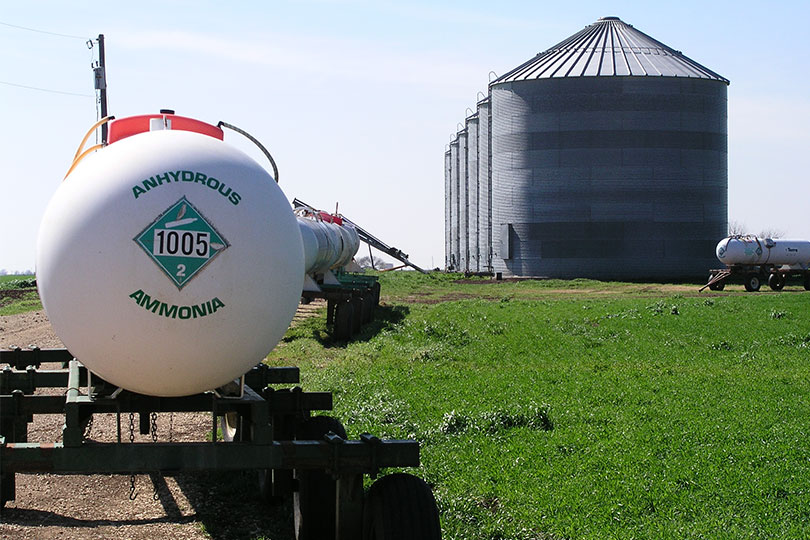By Jennifer Whitlock
Field Editor
As the holiday season hits a high note, supply chain issues remain front and center in Americans’ minds. Imports of consumer goods have garnered the most attention, with fears over whether the trendiest gift items will be available on time.
But long after people turn from Christmas cheer to New Year’s resolutions, the ramifications of the supply chain crisis will still be affecting U.S. farmers and ranchers.
American agriculture is impacted by supply chain disruptions in both imports and exports. While closely intertwined, each aspect uniquely affects farmers and ranchers.
Exports
Exports are a key component of the profitability of American farms and ranches. About 25% of all U.S. farm products are exported each year, according to the American Farm Bureau Federation (AFBF).
And relationships and reliability are key drivers in export sales, which accounted for slightly more than 10% of the U.S. gross domestic product last year.
Cancelled vessel bookings, shipping container shortages, bottlenecks of cargo ships at U.S. ports and other ocean shipping problems have agriculture feeling the brunt of ocean freight infrastructure shortfalls.
A survey by the agricultural export group, Agriculture Transport Coalition (AgTC), noted 22% of U.S. agricultural exports could not be completed due to high ocean carrier rates, freighters declining to carry export cargo, unreasonable demurrage and detention charges and other unfair trade practices.
“The transportation crisis for U.S. agriculture and forest products is becoming increasingly dire each month. There is nothing we produce in agriculture and forest products in this country that cannot be sourced in some other country. If we cannot deliver, affordably and dependably, our foreign customers will find alternatives to our exports,” AgTC and 95 other agricultural groups, including AFBF, wrote in a letter to U.S. Reps. John Garamendi and Dusty Johnson in support of the legislators’ Ocean Shipping Reform Act of 2021.
Moving the goods over land is another sticking point in the agricultural export supply chain. Labor shortages in the trucking and rail industries coupled with high demand create a tight surface transportation market and increased shipping costs across the spectrum.
On top of the labor issues, there aren’t enough shipping containers or container chassis, the wheeled metal frames which support the containers during surface transport.
Add in crumbling American infrastructure and the situation becomes a recipe for disaster for farmers and ranchers trying to move products.
But alongside other legislative efforts to modernize and streamline ocean shipping, AFBF President Zippy Duvall noted the Infrastructure Investment and Jobs Act will help alleviate some of these issues.
“Farmers and ranchers depend on millions of miles of roadways and waterways to get their products to America’s dinner tables, and they rely on ports to ship food, fiber and fuel to countries around the world. Improvements in transportation infrastructure, as well as repair and upgrades to the aging western water infrastructure, will ensure farmers can continue to keep this nation fed,” Duvall said.
Imports
While export issues add challenges in getting goods from farm to port, thanks to import supply chain matters, farmers and ranchers are facing an equally daunting task getting farm inputs from overseas to the farm.
The same bottlenecks at shipping terminals, surface transportation issues and labor shortages plague agricultural importers, too.
Now, crop protectants, fertilizers, tires and parts for farm equipment, computer chips for tractors and more are all in short supply.
Fertilizer costs have increased to unprecedented highs. The average retail price of anhydrous ammonia was at more than $1,000 per ton in November, compared to just under $500 per ton last year, Texas Farm Bureau (TFB) Associate Director of Commodity and Regulatory Activities Brant Wilbourn noted.
“Countervailing duty investigations into some of the major suppliers of raw phosphate and urea ammonium nitrate led to tariffs on those fertilizer components, which trickles down in the form of higher on-farm fertilizer prices,” he said.
On top of the tariffs, many countries from which the U.S. sources fertilizer and other farm inputs are facing energy crises as they ramp up production after COVID-19.
“As a result, in the upcoming growing season, farmers are looking at spending about 36% of their operating costs on fertilizer alone,” Wilbourn said. “That’s a big chunk of a farm budget, and they’re also looking at increased input costs across the board. So, they’re understandably concerned about profitability.”
Electronic components like computer chips for tractors and other farm equipment, as well as new parts to repair equipment, are also difficult to find.
“The longer we let this play out and the longer we continue allowing these challenges to multiply, the closer we inch to facing a national security issue and food supply crisis,” Wilbourn said.


[…] On top of the mechanical failure, the company is also dealing with supply chain issues due to the global pandemic. Supply chain issues have been a major concern for the agriculture industry this year. […]